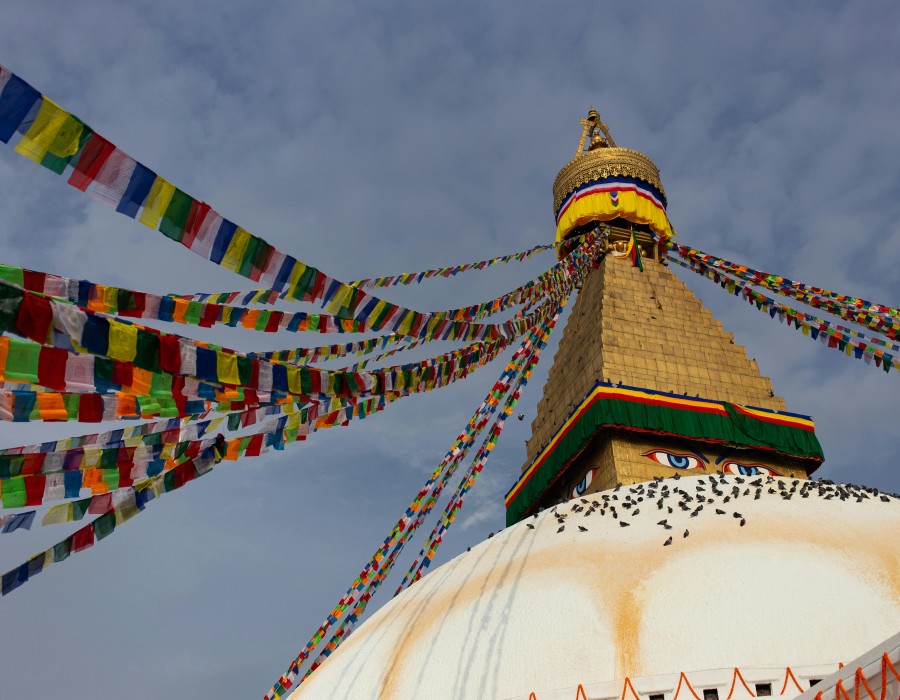If you’re ready to explore the peaks and culture of Nepal, let’s talk about Kathmandu. This isn’t your everyday city adventure; at over 1,400 meters (4,600 feet) above sea level, Kathmandu promises a trip where elevation meets exploration. This guide will give you the ultimate rundown on how Kathmandu’s height impacts the city’s daily life, the best places to visit, and how to prepare for high-altitude adventure.
Why Kathmandu’s Elevation is a Big Deal
Kathmandu sits in a bowl-shaped valley cradled by the Himalayas. The city’s elevation was created by powerful tectonic shifts millions of years ago, which built both the Kathmandu Valley and the Himalayan range. Today, it’s a bustling hub where culture and nature intersect, perfect for those looking to explore mountains and monasteries alike.
A City Built in the Sky
Life at 1,400 meters above sea level means that the air is thinner, and even the food and architecture are influenced by this unique altitude. The Kathmandu elevation can be a surprise to visitors not used to high-altitude living, so acclimatization is key. However, once you adapt, the city offers stunning views, from rooftop cafes to temple peaks.
Exploring Kathmandu: Must-Visit High-Elevation Spots
Kathmandu and its surrounding areas are full of stunning elevated spots that offer both cultural and scenic experiences. Let’s dive into some can’t-miss locations around Kathmandu Valley.
1. Kathmandu Valley Floor (1,400 meters)
- What’s Here: This is the heart of Kathmandu, where you’ll find the city’s historic sites and cultural hubs. The valley floor is packed with ancient temples, markets, and UNESCO World Heritage Sites like Pashupatinath Temple and Durbar Square.
- Vibe Check: You’ll find traditional Nepali life blending with the energy of a busy capital. The valley floor’s elevation is a great warm-up for exploring nearby higher spots.
2. Nagarkot (2,195 meters)
- What’s Here: About an hour’s drive from central Kathmandu, Nagarkot offers sweeping views of the Himalayas, including glimpses of Mount Everest on clear days.
- Best For: Sunrise lovers, photographers, and nature enthusiasts. Plan an early morning visit for a sunrise you’ll never forget.
3. Dhulikhel (1,550 meters)
- What’s Here: Known for its serene mountain views and Newari culture, Dhulikhel is perfect for a relaxed day trip. It’s less touristy than Nagarkot, offering a more laid-back vibe.
- Vibe Check: Authentic, with a focus on local culture and calm mountain views.
4. Namo Buddha (1,750 meters)
- What’s Here: A revered Buddhist pilgrimage site where, according to legend, a young prince sacrificed himself to feed a starving tigress. It’s both a spiritual site and a great spot for mountain views.
- Best For: Those seeking a mix of spirituality, history, and scenic beauty.
5. Swayambhunath Stupa (Monkey Temple)
- Elevation: Approximately 1,400 meters
- What’s Here: This iconic stupa sits atop a hill, providing panoramic views of Kathmandu. You’ll also get to meet Kathmandu’s cheekiest residents—the monkeys that roam the temple grounds.
- Pro Tip: Visit at sunrise or sunset for incredible views of the valley.
Daily Life at High Altitude
Living in Kathmandu isn’t just a physical adjustment; it’s a lifestyle shaped by altitude. Thin air, crisp breezes, and a slightly cooler climate mean that locals have tailored their food, clothing, and even architecture to their environment. Dishes are heartier, often warming and nutrient-dense to combat cooler temperatures. Be sure to try local favorites like dal bhat (lentil soup and rice) and momo dumplings while you’re there.
Rooftop Dining with a Himalayan View
Kathmandu’s rooftop cafes and restaurants are popular for a reason: where else can you enjoy a meal with the Himalayas as your backdrop? Here are a few highlights to check out:
- Thamel Rooftops: The tourist district of Thamel is packed with rooftop spots. Try a cup of chai and enjoy a bird’s-eye view of the lively streets below.
- Momo and Mountain Views: Many rooftop cafes serve traditional dishes like momos, spiced dumplings filled with meat or veggies. Pair them with Sherpa tea (black tea with yak butter and salt) for an authentic taste of Kathmandu.
Best Time for Rooftop Dining: Early morning and late evening are prime times for these spots. Arrive early for sunrise or relax in the evening as the city lights up.
Preparing for High-Altitude Adventures in Kathmandu
Kathmandu is the starting point for some of the most famous trekking routes in the world, including the journey to Everest Base Camp. Here’s how to prepare for your high-altitude experience:
1. Acclimatize
- Spend a few days in Kathmandu to let your body adjust to the thinner air before heading higher. This helps prevent altitude sickness, which can occur when moving to higher elevations too quickly.
2. Hydrate
- Staying hydrated is essential at high altitudes. Carry a water bottle with you at all times, and aim to drink regularly throughout the day.
3. Packing Essentials
- Make sure to pack warm clothing, trekking shoes, and layers. Temperatures can change quickly at high elevations, so being prepared is key.
4. Get Your Permits
- If you’re trekking in Nepal, you’ll need specific permits. The TIMS card (Trekker’s Information Management System) is necessary for most routes, and you may need additional permits for national parks or restricted areas.
Staying Safe While Adventuring
Safety should be a top priority during high-altitude explorations. Here are some tips to keep your journey safe:
- Hire a Guide: Even if you’re an experienced trekker, having a guide can be invaluable. Local guides know the terrain and are familiar with weather patterns.
- Emergency Contacts: Always share your travel plans with someone reliable. Bring a fully charged phone, and know where the nearest medical facilities are.
- Weather Awareness: Mountain weather can change rapidly, so be prepared for sudden shifts. Keep an eye on weather updates and have rain gear ready.
- Altitude Sickness: Know the signs—headaches, nausea, and dizziness can be indicators of altitude sickness. If symptoms worsen, don’t push on; descending to a lower altitude can help your body recover.
Factual Tidbits About Kathmandu’s High Elevation
Here are some fun facts that highlight just how special Kathmandu’s elevation is:
- Above the Clouds: Thanks to its high elevation, Kathmandu often sees surreal cloud formations that look like fluffy seas below.
- Starry Nights: Clear nights reveal constellations and, sometimes, even the Milky Way, thanks to reduced light pollution.
- Diverse Culture: Kathmandu is home to over 120 ethnic groups, each with unique languages and traditions. The city’s altitude acts as a magnet for diverse cultures and a crossroads for travelers from around the world.
- Geological Significance: Kathmandu’s valley was formed by tectonic activity, making it both a cultural and geological hotspot. The elevation gives it an added allure for geologists and travelers alike.
Ready to Elevate Your Travel Game?
Kathmandu’s elevation is more than a number; it’s a lifestyle, a challenge, and an experience that redefines adventure. Whether you’re here to explore the city’s vibrant culture, enjoy panoramic mountain views, or prepare for a Himalayan trek, Kathmandu offers a unique blend of altitude and attitude.
So, strap on those adventure boots, grab a cup of chai, and let Kathmandu elevate your travel experience—literally. With each step you take, you’ll be reminded that life above the clouds is as exciting as it is enriching. Whether you’re a solo traveler or part of a group, the magic of Kathmandu’s elevation is waiting for you to explore. Ready to take your trip to new heights? Then Kathmandu is calling.






Comments